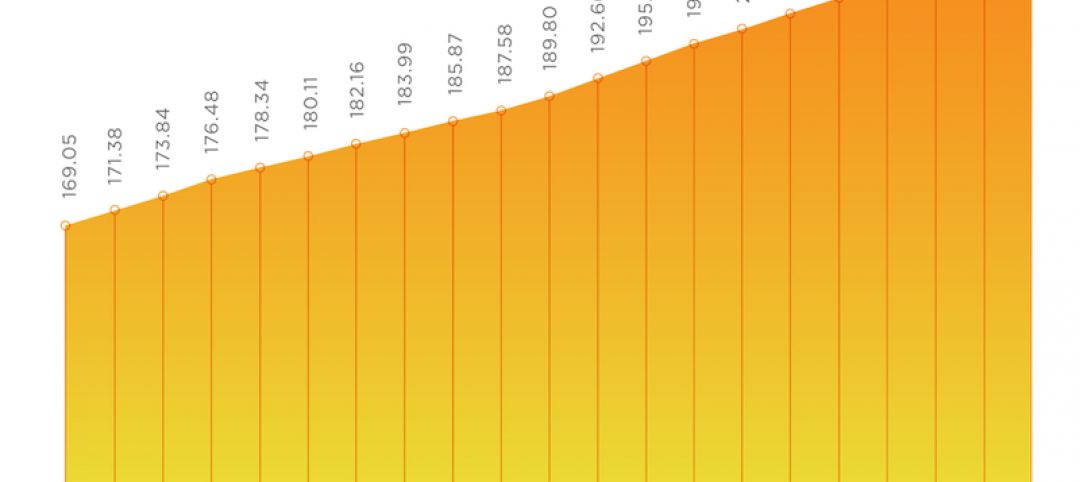Thirty-eight states and the District of Columbia added construction jobs between April 2017 and April 2018, while 29 states added construction jobs between March and April, according to an analysis by the Associated General Contractors of America of Labor Department data released today. Association officials said the employment growth likely would have been higher if firms could find more qualified workers to hire.
"Firms in many parts of the country are working to keep pace with growing demand for construction services," said chief economist Ken Simonson. "Many of those firms are having a hard time finding and hiring enough qualified workers as the pool of available workers remains very tight."
California added the most construction jobs (59,500 jobs, 7.4%) during the past year. Other states adding a large number of new construction jobs for the past 12 months include Texas (40,600 jobs, 5.7%); Florida (34,900 jobs, 7.0%); Georgia (13,900 jobs, 7.6%) and Arizona (11,700 jobs, 8.2%). West Virginia (11.6%, 3,500 jobs) added the highest percentage of new construction jobs during the past year, followed by Nevada (9.8 percent, 8,200 jobs); Arizona; Utah (8.1%, 7,700 jobs) and Idaho (7.9%, 3,500 jobs).
Eleven states shed construction jobs between April 2017 and April 2018 while construction employment was unchanged in Montana. North Dakota lost the highest total and percentage of construction jobs (-4,900 jobs, -17.0%), followed by Iowa (-2,500 jobs, -3.2%); Missouri (-1,500 jobs, -1.2%); South Carolina (-1,400 jobs, -1.4%) and Nebraska (-1,100 jobs, -2.1%). In addition to North Dakota, other states that lost a high percentage of construction jobs for the month included South Dakota (-3.3%, -800 jobs); Iowa; Nebraska and Hawaii (-1.9%, -700 jobs).
Twenty-nine states added construction jobs between March and April. California added the most (10,000 jobs, 1.2%), followed by Texas (4,100 jobs, 0.6%); Louisiana (2,200 jobs, 1.5%); Georgia (2,100 jobs, 1.1%) and Washington (2,100 jobs, 1.0%). Louisiana added the highest percentage of construction jobs for the month, followed by Kentucky (1.4%, 1,100 jobs); New Hampshire (1.4%, 400 jobs); Alaska (1.3%, 200 jobs) and Vermont (1.3%, 200 jobs). Employment set an all-time high in Texas.
Nineteen states lost construction jobs from March to April, while construction employment was unchanged in Mississippi, Montana and the District of Columbia. Indiana lost the most construction jobs for the month (-2,300 jobs, -1.6%), followed by Wisconsin (-2,000 jobs, -1.6%); South Carolina (-1,300 jobs, -1.3%); Massachusetts (-1,300 jobs, -0.8%) and Michigan (-1,100 jobs, -0.6%). North Dakota lost the highest percentage of construction jobs (-2.8%, -700 jobs), followed by Delaware (-1.7%, -400 jobs); Wisconsin; Indiana; South Carolina and South Dakota (-1.3%, -300 jobs).
Association officials said strong demand, particularly from the private-sector, was prompting firms in most states to add staff. But they cautioned that relatively few young workers appear to be entering the construction industry. They said the strong economy was increasing competition for most workers and construction recruiting is hampered by the fact relatively few schools offer instruction in construction skills or counsel students to consider high-paying construction careers.
"The collective cultural fixation on urging every student to go to college and seek office jobs means relatively few young adults are ever encouraged to consider careers in construction," said Stephen E. Sandherr, the association's chief executive officer. View the state employment data by rank, state, and peak. View the state employment map.
Related Stories
Market Data | Feb 3, 2021
Construction spending diverges in December with slump in private nonresidential sector, mixed public work, and boom in homebuilding
Demand for nonresidential construction and public works will decline amid ongoing pandemic concerns.
Market Data | Feb 1, 2021
The New York City market is back on top and leads the U.S. hotel construction pipeline
New York City has the greatest number of projects under construction with 108 projects/19,439 rooms.
Market Data | Jan 29, 2021
Multifamily housing construction outlook soars in late 2020
Exceeds pre-COVID levels, reaching highest mark since 1st quarter 2018.
Market Data | Jan 29, 2021
The U.S. hotel construction pipeline stands at 5,216 projects/650,222 rooms at year-end 2020
At the end of Q4 ‘20, projects currently under construction stand at 1,487 projects/199,700 rooms.
Multifamily Housing | Jan 27, 2021
2021 multifamily housing outlook: Dallas, Miami, D.C., will lead apartment completions
In its latest outlook report for the multifamily rental market, Yardi Matrix outlined several reasons for hope for a solid recovery for the multifamily housing sector in 2021, especially during the second half of the year.
Market Data | Jan 26, 2021
Construction employment in December trails pre-pandemic levels in 34 states
Texas and Vermont have worst February-December losses while Virginia and Alabama add the most.
Market Data | Jan 19, 2021
Architecture Billings continue to lose ground
The pace of decline during December accelerated from November.
Market Data | Jan 19, 2021
2021 construction forecast: Nonresidential building spending will drop 5.7%, bounce back in 2022
Healthcare and public safety are the only nonresidential construction sectors that will see growth in spending in 2021, according to AIA's 2021 Consensus Construction Forecast.
Market Data | Jan 13, 2021
Atlanta, Dallas seen as most favorable U.S. markets for commercial development in 2021, CBRE analysis finds
U.S. construction activity is expected to bounce back in 2021, after a slowdown in 2020 due to challenges brought by COVID-19.
Market Data | Jan 13, 2021
Nonres construction could be in for a long recovery period
Rider Levett Bucknall’s latest cost report singles out unemployment and infrastructure spending as barometers.

















